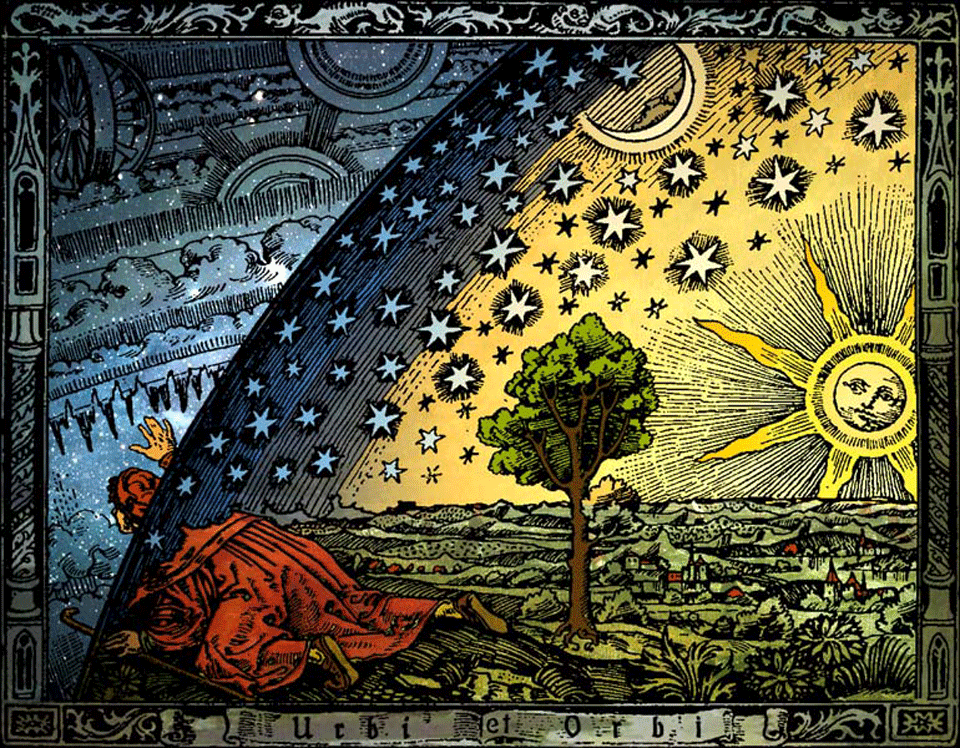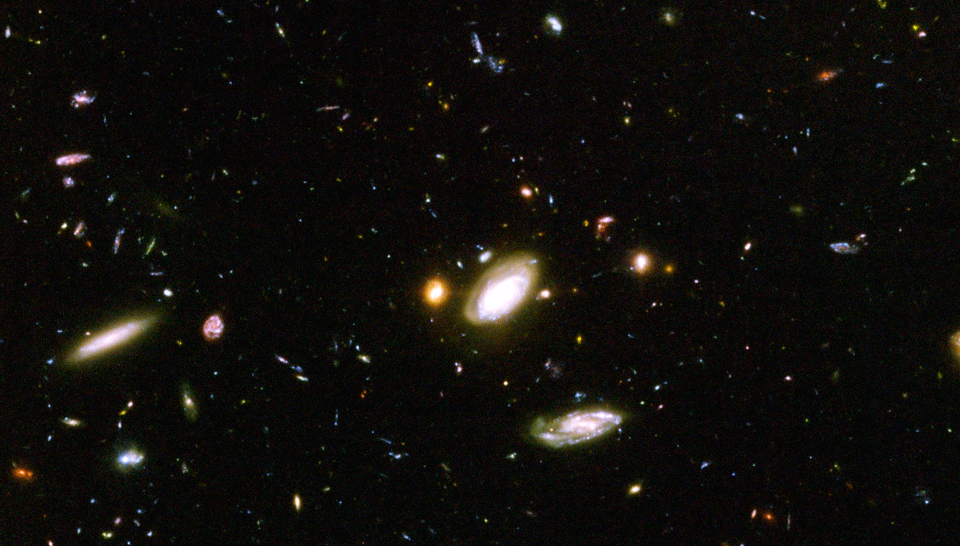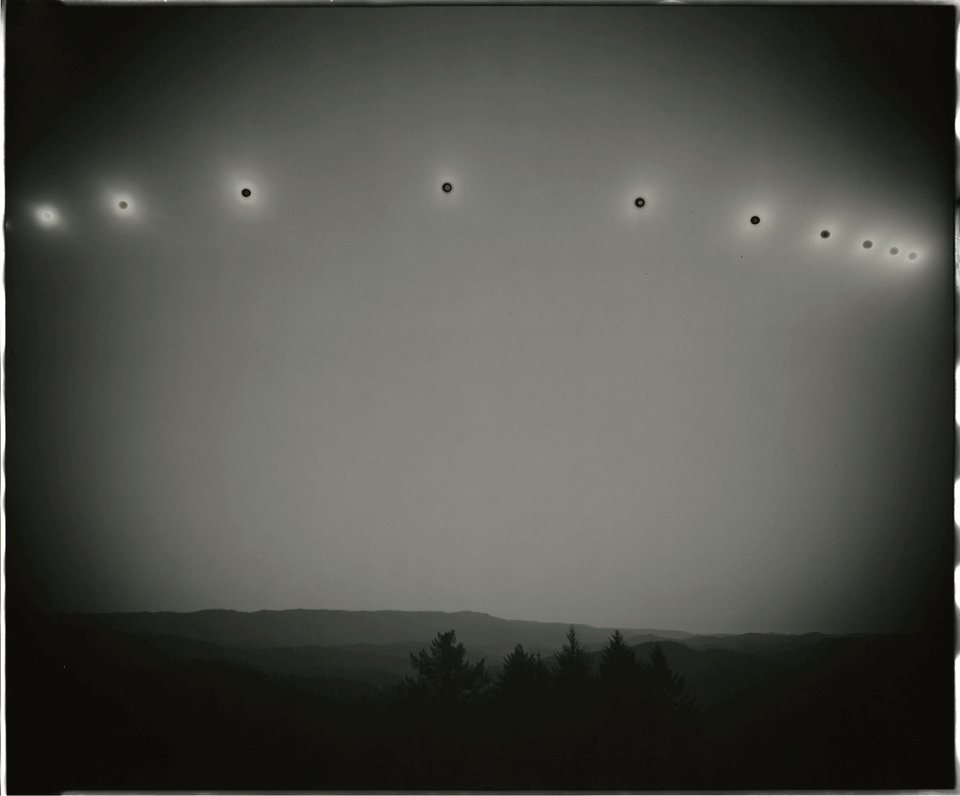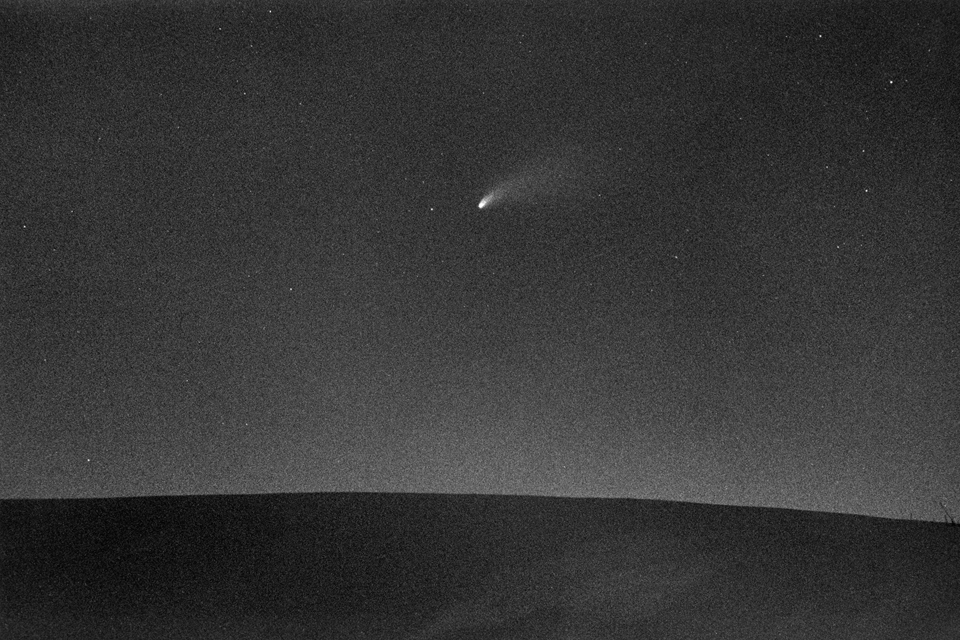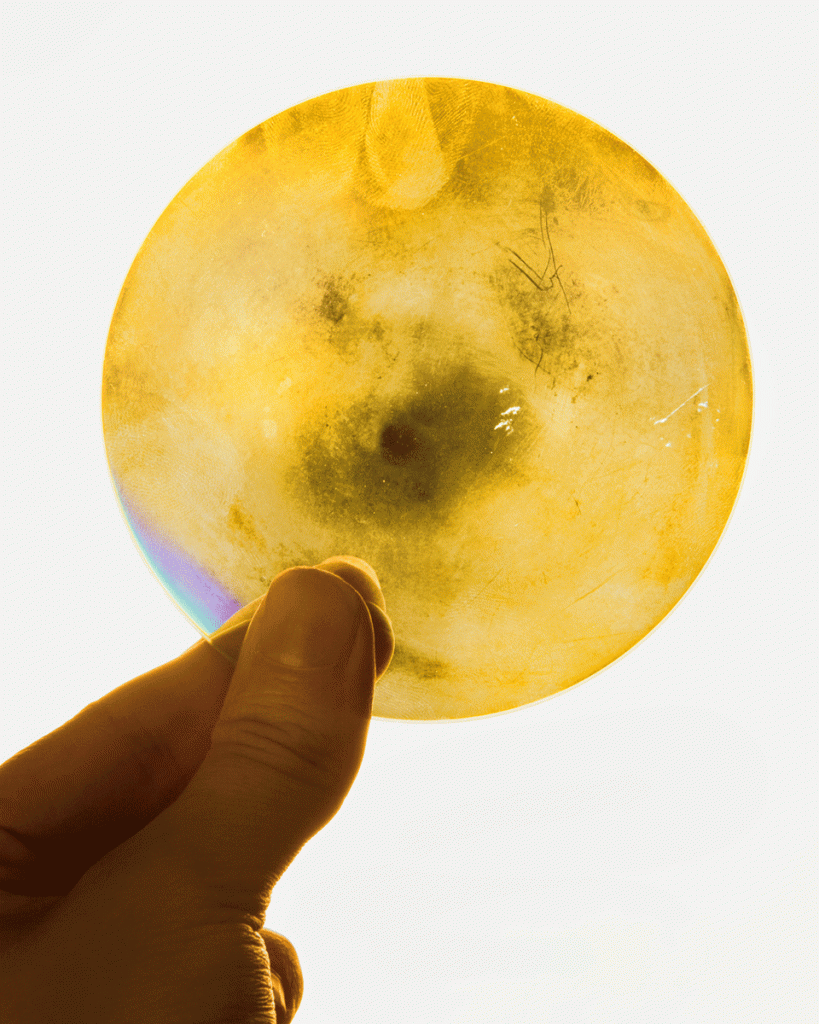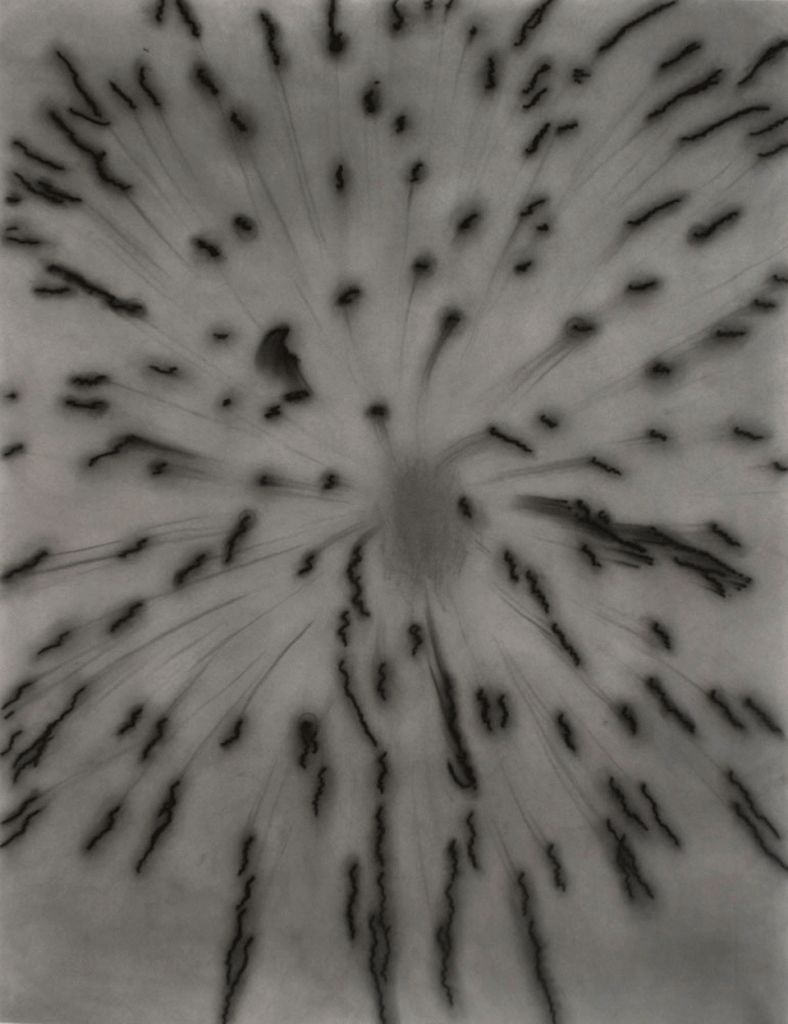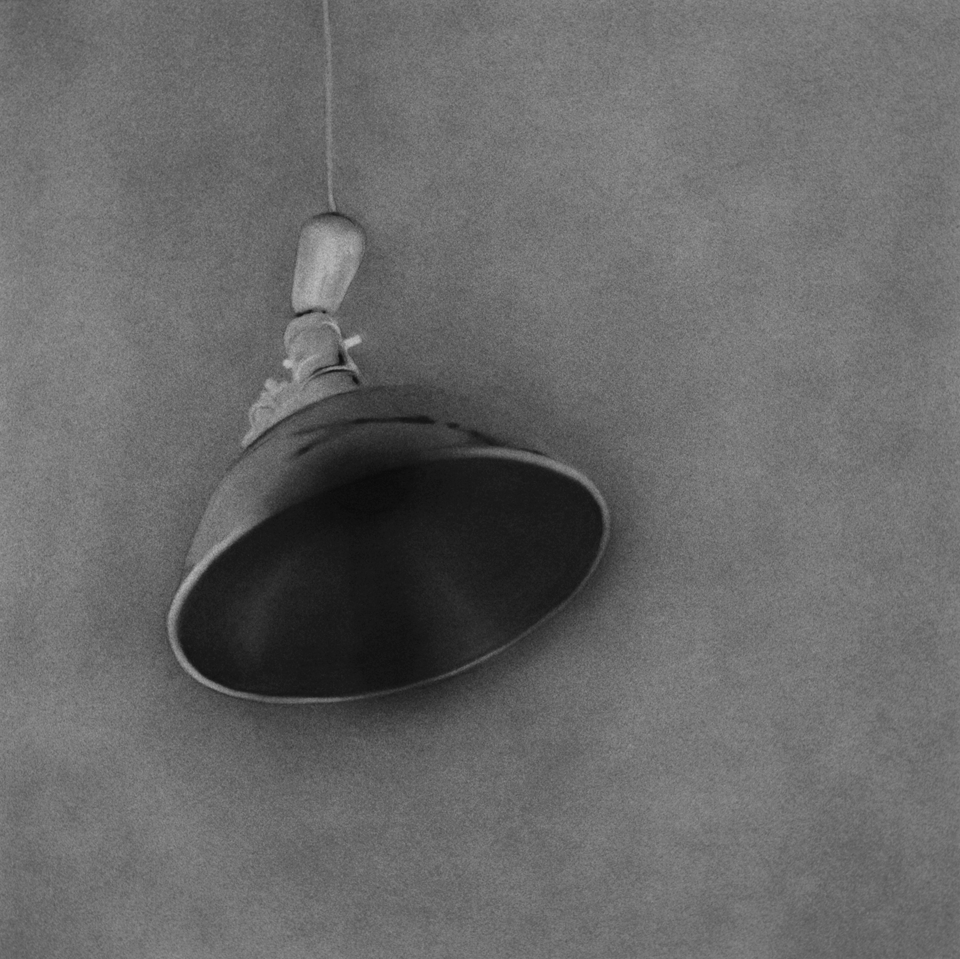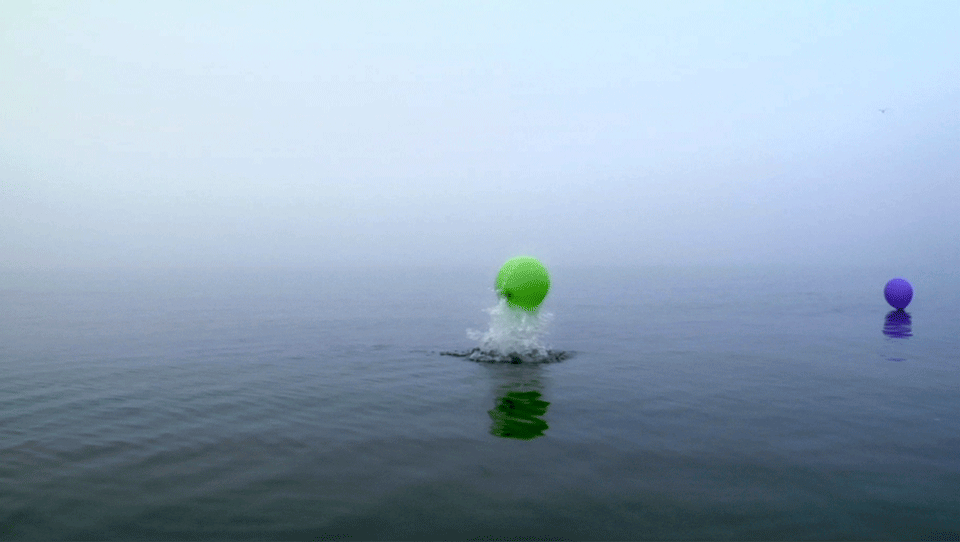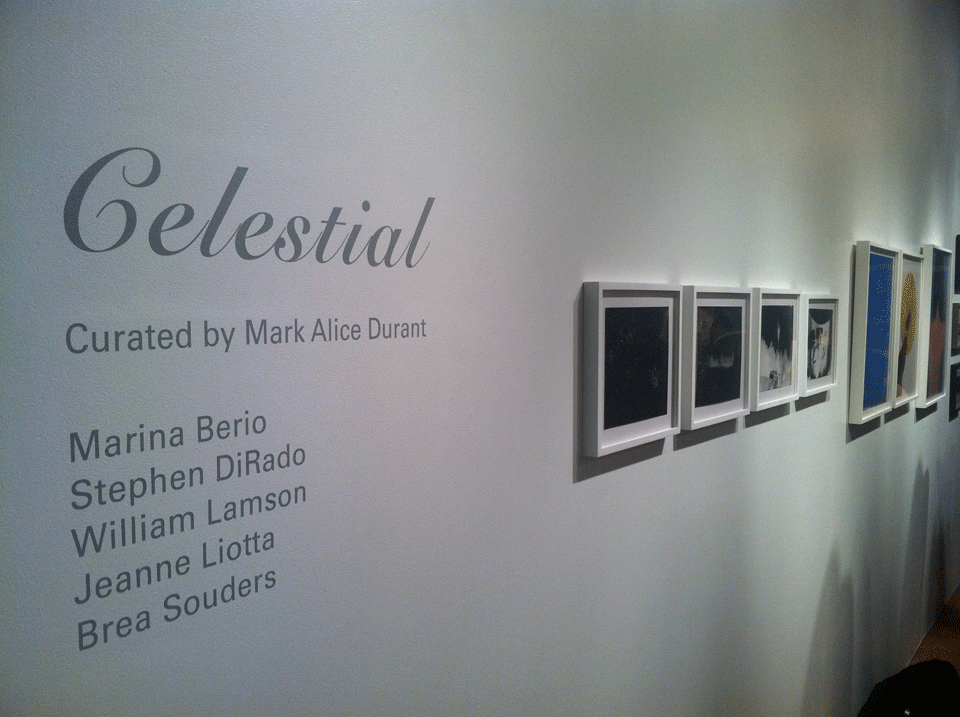55 Angels
I have loved the stars too fondly to be fearful of the night. Galileo Galilei
When I was 18 I had to decide whether to become an astronomer or a photographer. Thomas Ruff
Our eyes are befogged by an ever-present haze of our own making. When a star or a group of stars can manage to pierce our electric firmament, we often delight in recognizing the Big Dipper, the belt of Orion or the closely-knit seven sisters, the Pleiades, as if discovering them for the first time. We don’t perceive the stars the way ancient people, or even our grandparents, could. The average Chaldean, Babylonian, Celtic Druid, or Mayan was far more sensitive and aware of the complexities of the celestial dome than a citizen of the 21st century. For millennia humans consciously lived under the stars, and were keenly attuned to the regularity of their movements. And when an occasional anomaly appeared in the guise of an eclipse, a comet, or distant supernova, it was momentous: inspiring speculation, fear, and wonderment.
Yes ancient concepts of the heavens were partly shaped by superstition and elaborately hierarchical religious nonsense and until Gallileo, Europeans believed that the heavenly spheres were kept in constant motion by a host of 55 angels. But the imaginative investment to discern the meaning and purpose of our crystalline dome, shames the contemporary imagination. When most of us attempt to contemplate our cosmic origins, it is an exercise in representational deficit disorder; we hang our metaphors and symbolic interpretations over the stars in foppish layering.
The Flammarion illustration above is an 1888 woodcut of a medieval monk poking his head out of the dome encasing the flat earth. His hand is upraised as if to protect himself from the overwhelming vision of the vast and elaborate celestial mechanics of Empyrean Heaven, the dwelling place of God and his celestial servants of pure light. The monk is astonished, bewildered. For him, earth is the cellar of the universe, a place of passions, dirt, disease, and imperfection. If not driven mad by this encounter, he surely will never be the same. This is what is meant by the sublime.
The roots of the term refer to things elevated, but also things in between, at the border, limit, or threshold. While medieval alchemists used the term in relation to the purification of substances, its modern connotations were set in the 17th and 18th century when the sublime meant a confrontation with the unknown, with larger forces that threaten to physically, emotionally and psychically overwhelm the individual and by extension the entire structure of knowledge. But perhaps this concept of the sublime has become a historical curiosity; an anachronistic category of experience relevant to a time when new continents were being explored and astronomers observed irrefutable evidence that the geocentric universe comprised of perfect and unchangeable spheres was an illusion. The world and the universe were far more diverse and chaotic than imagined.
We live in the time of the cheap sublime, a word so debased that it can be used to describe a new app on a smart phone or a swig of merlot on a privileged palate (I am guilty of once describing a tamale as sublime). While one cannot pin the blame on a single individual, Stephen Spielberg and the haze-filled frames of his early films like Close Encounters of the Third Kind, E.T. The Extraterrestrial and Poltergeist did more than their share to simplify and sentimentalize the image of humans experiencing the sublime. Think of all those nighttime scenes enveloped in misty cotton balls of light and the innocent upturned faces illuminated by UFO headlights. Yet for all of its immersive qualities, cinema is safe, distant, familiar, and cozily imbued with the smell of popcorn. Our monk had no access to a well-stocked concession stand prior to his encounter with the Empyrean, although a large Milky Way bar might have helped to ease his existential crisis.
For the contemporary imagination, something like authentic astonishment has been revived through the growing archive of celestial imagery provided by the Hubble Space Telescope, launched into orbit in 1990. The Hubble has produced a seemingly unending portfolio of a starry sublime – evoking mystical reveries and existential gasps. Yet in spite of the technological complexity of such a device, the infinite majesty of the universe is impossible to fully picture adequately. The Deep Field image is a snapshot of the universe in its infancy. The photons comprising this picture have been traveling for 13 billion years to reach the Hubble’s mirrored array orbiting 300 miles above the earth’s surface. Or put it this way, the light we see in the Hubble Deep Field image has traveled 60 sextillion miles; that’s a 60 followed by 21 zeros. Despite the primal beauty of such imagery, the unfathomability of the time and distance suggested by this image repels us into abstraction.
Paradoxically, for artists with far fewer resources but with an embracing imagination, evoking the cosmos can be as simple as drawing a line with a star shape over it. In such an image we intuitively understand the relationship suggested of a knowable and measurable horizon –our home– and the infinite space above. From Galileo to the Hubble, lens-based perception has been the dominant means of observing and representing the celestial sphere. But as the saying goes, no matter how big the telescope, the human eye occupies one end. Emmanuel Kant described the sublime as simultaneous feelings of displeasure at the failure of our imagination to account for certain overwhelming experiences, and pleasure at the self-awareness of our limitation, which is to say, an acute awareness of our own ignorance. Wonder, mystery, fear, and futility: these are feelings at which a scientist may be inclined to scoff, rightly suspicious of willful naiveté. The artists presented here do not represent or signify knowledge in the scientific sense – their role is both to genuflect and laugh, to acknowledge the limitations of human perception, and simultaneously revel in its fragmentary realities. This is the modest sublime.
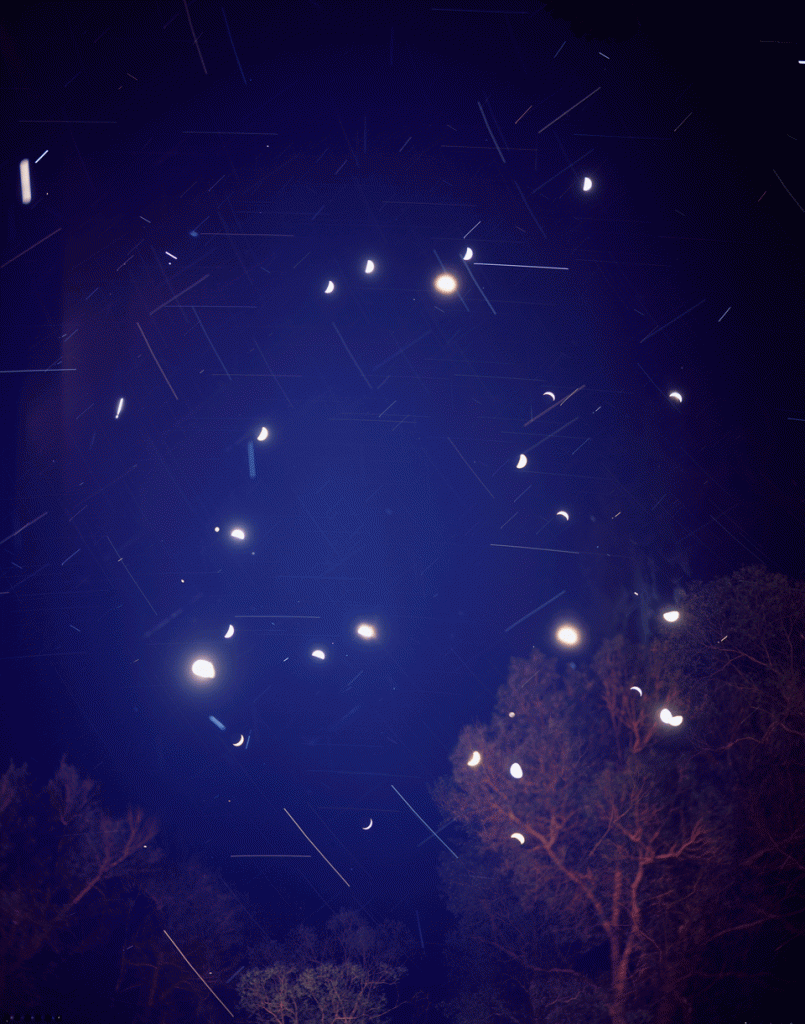
Sharon Harper, ‘Moon Studies and Star Scratches’, No. 9 June 4 – 30, 2005 Clearmont, Wyoming 15, 30, 20, 8, 5, 1, 5, 2, 1 minute exposures; 15, 8, 10, 14 second exposures
Sharon Harper’s work often emphasizes the use of optical tools in our attempt to extend human vision. But instead of accepting the supposed clarity and objectivity of the refined lenses of cameras and telescopes, her images instead suggest a kind of slippage of reality, resulting in a multiplied presence of a celestial objects. We expect one moon, but instead there are 24, making an unexpected constellated pattern. In other works Harper makes long exposures of the night sky. In place of the precise star tracks that evidence the earth turning on its axis, we get scratches and traces that might be fireflies, burning embers or something even more prosaic like technical problems with the film processing. In her series Sun / Moon (Trying to See Through a Telescope) again our expectations are thwarted. Instead of profoundly clear and revealing visions of the guardians of our days and nights, we get fragments, vignetting, blurring, and multiple attempts at clarity. Harper’s series evokes the struggle to attain revelation, and although what is seen is episodic and incomplete, what is revealed has its own discontinuous beauty.
Thomas Ruff’s Cassini images are a kind of double homage to the history of astronomy and its contemporary manifestations. Cassini was a 17th century French/Italian astronomer who first observed the moons of Saturn. The Cassini-Huygens is an unmanned spacecraft launched in 1997 to study the planet Saturn. It reached its destination in 2004 and since has been transmitting extraordinary images of Saturn’s rings and the complex dance Saturn has with its 62 moons. The colors in Ruff’s Cassini images are not natural in much the same manner that most of the color in Hubble imagery is assigned, sometimes to coincide with physical properties, sometimes just as a subjective choice on the part of the astrophysicists who are interpreting data. Although Ruff claims a difficult choice in his youth between photography and astronomy, in this work he is neither the photographer, nor is he translating these images in scientific terms. In previous projects, Ruff has worked with portraiture, surveillance imagery, Internet downloads, urban landscapes and newspaper photographs; and although photography is central to his practice, he is not a photographer in the conventional sense; his work is an exploration, in part, of how photographic images shape perception. Ruff re-presents the Cassini images as abstractions of distant bodies and suggestive meditations on the extension of human vision beyond our home planet.
As Chris McCaw tells it, one night while photographing star trails he had one too many mouthfuls of whiskey. Waking up with the sun high above the horizon he realized that those delicate traces of whirling cosmos that he was hoping to capture on film would have been obliterated by that nuclear furnace that we call the Sun. He developed the film anyway and was intrigued by the unexpected force of the singular streak of light that had literally burned into his negative. After some experimentation he arrived at direct, one of a kind images by placing photographic paper in the negative holder. While the sun crosses the sky it not only leaves an impression in the paper’s emulsion, but also burns a path along the paper. The images are dramatic and physical in a way that photographs seldom are. The lens, in McCaw’s hands, is not simply a refined and reticent device for focusing light but can be used forcefully and even violently. The resulting pictures resonate in many directions as observations gone awry; they also read ritualistic, talismanic, like some kind of message or symbol burned into the celestial dome demanding interpretation by astronomers, astrologers, priests, and other prophets of doom.
Beginning in the late 1990s and continuing to this day, Stephen DiRado has made a stunning portfolio of ‘straight’ photographs of a variety of dramatic celestial events such as comets and eclipses and more quotidian, yet no less miraculous, phenomena such as a sliver of a moon hanging over a watery horizon. Black and white and small in size, DiRado’s landscapes are compressed into miniature tableaux, perfectly arranged discrete worlds. Always earth-bound by horizon lines and hulking silhouettes of man made structures, DiRado reiterates the duality of the terrestrial and celestial divide by looking and giving us a granular crustiness of the night sky as if the dark dome were sprinkled with illuminated sugar crystals.
Brea Souders is a photographer whose deceptively simple images sometimes infer the celestial realm indirectly. Her Modern Day Halo #3 shows a delicate hand placing a circular lens, golden and somewhat tarnished, against the sky perhaps replacing the sun itself. This image is assertive and enigmatic, re-imagining the holy aura from Renaissance paintings as something earthbound yet still generating a mesmerizing radiance. Royal Blue traces a delicate lace pattern hovering over the loveliest cerulean (a color term with its origins in the Latin for heaven) this side of a Bellini Virgin. As in many of Souders’ images, Royal Blue seems to emit luminescence as if it were not simply reflecting celestial light but was the source of it. With nary a horizon line, her soft colors, and fragments of objects, scatter across her frames as if in a pastel archeological dig. Hers is a world of images that limn the space between the material world and the illusive realm of appearances.
Marina Berio uses photographic negatives to provide a kind of stencil with which she makes her charcoal drawings of bursts of fireworks, empty roads at night, and the lights illuminating artist studios. I imagine Berio, camera on tripod, under an exploding sky. Fourth of July, Bastille Day, New Year’s Eve, whatever the occasion, we send pigmented gunpowder as substitute shooting stars to explode the night, and experience an ersatz big bang or Armageddon. A second series, Burn Breathe depicts the lights hovering above artists in their studios. The mundane configurations of electrical fixtures and tangles of wire are presented as negative drawings, in which glowing bulbs are transformed into the black suns that illuminate an artist’s nocturnal struggles. In a kind of negative epiphany, she returns the photons of light and the blackened silver crystals of her negatives back into charred matter. Charcoal is an intermediary substance; a cousin to both diamonds and mud. It is a residue of the transformation of organic matter through fire; it lives between the promise of life and the finality of dust’s dispersal. Berio scrapes charcoal across the skin of paper, catching some of the crumbling cold embers in the tooth and grain, while much of it powders like dust to the floor or stains the image with a faint but unmistakable dark aura.
Embracing photography, sculpture, performance, drawing, and video, William Lamson playfully investigates both physical and existential futility. For A Line Describing the Sun, Lamson constructed a giant mobile magnifying glass that slowly moved across a dried lakebed in the Nevada desert. With echoes of McCaw and Berio’s work, Lamson followed the arc of the sun, the focused light burning a glassy black line in the surface of the earth. His video Levitation Exercise is mythical and silly, like a modern day Sisyphus, a man jumps and sprints across a nocturnal landscape in the attempt to keep an illuminated orb aloft – as if he alone is responsible for keeping the heavens in their proper place. In Emerge, a video that is humorous, mystifying and mesmerizing, balloons squirt out of becalmed waters before lifting off toward a birthday party in the Empyrean Heavens in an endless loop of creation and ascendance.
Known primarily as an experimental filmmaker, Jeanne Liotta’s 2007 film Observando el Cielo brought together seven years of images of the sky as observed by her camera mounted on ‘this turning tripod, Earth’. Perhaps less well-known but equally as obsessive and wide ranging is her mixed media work on paper. Her Science Times collages are created out of images and texts excised from the New York Times science section and combined with ghostly photograms such as that of a string of pearls. The imagery in Darkling Plain series was generated through pinhole cameras and photograms, proving that the simplest and most economic of gestures are capable of evoking a fragmentary sublime. Since all matter and energy was present at the Big Bang, everything is technically at the center of the universe. Not only is the universe neither geocentric nor heliocentric, it is omnicentric; the center is everywhere. One Liotta image in particular evokes this paradox by marrying the expansiveness of the night sky with a more earthly moment of intimacy. As if prying into a celestial zoetrope, we can surveille an obscured embrace in which one lover appears to be gesturing toward what might be a column of light, suggesting that here in the darkened cellar of the universe, the physical boundaries of humanity might be momentarily transcended.

Jeanne Liotta, ‘Object of Desire (from the Science Times Series) 2001-2009, paper, pencil, newsprint, photogram
Basically everything we know about the cosmos we know from observing light. Yet, even with our most sophisticated instruments, we can only perceive the smallest part of the universe. Because of major discrepancies measured between gravitational forces and the amount of observable luminous material, it is estimated that upwards of 90% of the universe is invisible dark matter and thus far undetectable. The majority of the universe exists between those specks of light, those glints, sparks, points, pricks, and diamond shards we call stars. Less than 100 years ago Edwin Hubble realized that the Milky Way was not the only galaxy, in fact there were hundreds, thousands, or even billions of other galaxies and that, more astoundingly, they were all moving away from one another. Look at the Hubble Deep Field imagery and you see our origins; looking through the wrong end of a telescope conjures our cosmic future when everything will be much further away. As Hubble remarked, the history of astronomy is a history of receding horizons. As luminous matter expands in all directions, the distance between galaxies will increase to the point that in the future our skies will become increasingly empty of light. What happens then? Will we miss our stars? Will we still want to go out there? Will there be any reason to look up? Will our imaginations be diminished? Will we string up stratospheric Christmas lights in order to create artificial constellations? I imagine that we will still need something to wish upon.
Thanks to Allen Frame and John Stanley of the Camera Club of New York for the opportunity to curate the exhibition Celestial which inspired this essay. Thanks also to Stephen Frailey and Dear Dave, Magazine for publishing it in issue #11
